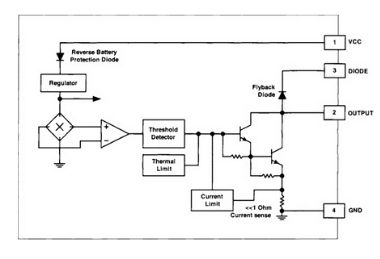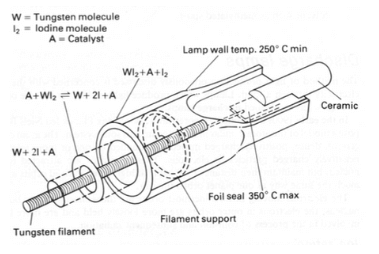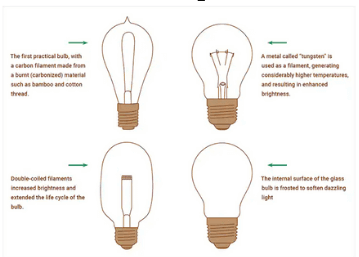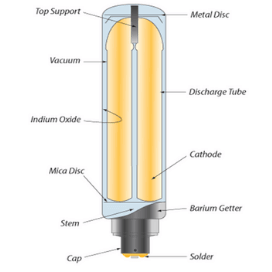Xenon Arc Lamps: A Bright and Versatile Light Source
A xenon arc lamp is a type of gas discharge lamp that produces light by passing electricity through ionized xenon gas at high pressure. Xenon arc lamps have a smooth emission curve in the ultraviolet to the visible spectrum, with characteristic wavelengths emitted from 750 to 1000 nm. They produce a bright white light that closely mimics natural sunlight, which extends their applications into various fields such as film, daylight simulation, solar testing, and research. Xenon arc lamps can be divided into three categories: continuous-output xenon short-arc lamps, continuous-output xenon long-arc lamps, and xenon flash lamps.
What is a Xenon Arc Lamp?
A xenon arc lamp is defined as a highly specialized type of gas discharge lamp, an electric light that produces light by passing electricity through ionized xenon gas at high pressure. The term “arc” refers to the electric current that flows between two electrodes in a gas-filled tube. The term “xenon” refers to the noble gas that is used as the main component of the gas mixture in the tube. Xenon is chosen for its high atomic number and low ionization potential, which allow it to emit a broad spectrum of light with high intensity and color rendering.
How Does a Xenon Arc Lamp Work?
The basic structure of a xenon arc lamp consists of two thoriated tungsten electrodes placed face to face with a small gap in an airtight transparent envelope of fused silica (also known as quartz). Thoriated tungsten is a tungsten alloy with 1 to 2% thorium added to enhance the electron emission capability of tungsten. Fused silica is a noncrystalline transparent silicon dioxide glass that provides extra strength and almost zero thermal expansion. It can withstand high pressure and high temperature.
The envelope or bulb is filled with xenon gas at very high pressure, typically about 30 bars. When voltage is applied across the electrodes, the gas discharge phenomenon starts in the xenon gas in the gap between electrodes. There are always some free electrons in the gas due to thermal agitation or cosmic rays. Due to the applied electric field across the electrodes, the free electrons get accelerated and collide with xenon atoms. Due to these collisions, electrons from the outer orbit of the xenon atoms get detached from their position and come to a higher energy level. Atoms with electrons of higher energy levels are called excited atoms.
When the excited atoms return from their higher energy level to their previous energy state, they release the extra energy as photons. The wavelength of energy emitted by photons is within the visible range. The color of the light of the xenon arc lamp is like daylight. Due to the electrostatic attraction of the anode (positive electrode), the free electrons ultimately come to the anode and return to the source.

Due to the attraction of the cathode (negative electrode), the positive ions (xenon atoms that lost electrons) ultimately collide with the cathode’s front surface and generate positive metal ions, neutral xenon atoms, and free electrons. These electrons are called secondary emitted electrons. These electrons help to continue the gas discharge process.
As the cathode is not additionally heated for electron emission, the cathode of a xenon arc lamp is known as a cold cathode.
What are the Types of Xenon Arc Lamps?
Xenon arc lamps can be roughly divided into three categories: continuous-output xenon short-arc lamps, continuous-output xenon long-arc lamps, and xenon flash lamps.
Continuous-output Xenon Short-arc Lamps
Continuous-output xenon short-arc lamps are designed for direct current (DC) operation with a very short arc length (typically less than 5 mm). They have high luminous efficacy (up to 75 lumens per watt) and high color rendering index (up to 95). They are widely used for cinema projection, searchlights, solar simulators, and other applications that require high brightness and stability.
Continuous-output Xenon Long-arc Lamps
Continuous-output xenon long-arc lamps are designed for alternating current (AC) operation with a longer arc length (typically more than 10 mm). They have lower luminous efficacy (up to 40 lumens per watt) and lower color rendering index (up to 85) than short-arc lamps. They are mainly used for general lighting purposes, such as street lighting, industrial lighting, and architectural lighting.
Xenon Flash Lamps
Xenon flash lamps are designed for pulsed operation with a very high peak power (up to several megawatts) and a very short duration (typically less than 1 millisecond). They have low average power consumption (up to 10 watts) and low average luminous efficacy (up to 10 lumens per watt). They are mainly used for photographic flash, strobe lights, laser pumping, and other applications that require high intensity and short duration.
What are the Advantages of Xenon Arc Lamps?
Xenon arc lamps have several advantages over other types of light sources:
• They produce a broad spectrum of light that covers most of the visible range and some of the ultraviolet and infrared range. • They have a high color rendering index that makes objects appear more natural and vivid. • They have a high color temperature that simulates natural sunlight and enhances visibility. • They have a long lifetime that ranges from 500 hours (7 kW) to 1500 hours (1 kW). • They have a stable arc with less flicker and noise. • They have non-consumable electrodes that allow longer operation without interruptions. • They have a low environmental impact as they do not contain mercury or other toxic substances.
What are the Disadvantages of Xenon Arc Lamps?
Xenon arc lamps also have some disadvantages compared to other types of light sources:
• They require high voltage and current to operate, which increases the cost and complexity of power supply and control systems. • They generate a lot of heat that requires efficient cooling systems. • They emit ultraviolet radiation that can cause eye damage or skin cancer if not properly filtered or shielded. • They are sensitive to shock and vibration that can damage or break the glass envelope or electrodes. • They are expensive to purchase and maintain compared to other types of light sources.
What are Some Applications of Xenon Arc Lamps?
Xenon arc lamps have various applications in different fields, such as film, daylight simulation, solar testing, research, etc.
Film
Xenon arc lamps are widely used for cinema projection in theaters because they provide high brightness, stability, color rendering, and contrast. They can project images on large screens with high resolution and quality. They can also be used for film production as they can create realistic lighting effects for indoor or outdoor scenes.
Daylight Simulation
Xenon arc lamps are ideal for daylight simulation because they produce light that closely matches natural sunlight in terms of spectrum, color temperature, color rendering, and intensity. They can be used for testing or evaluating products or materials under simulated sunlight conditions. For example, they can be used for testing solar cells or panels under standard test conditions (STC), which specify an irradiance level of 1000 W/m2 at 25°C with an air mass coefficient (AM) of 1.5G.
Solar Testing
Xenon arc lamps can also be used for solar testing because they can simulate different solar spectra under different atmospheric conditions. They can be used for testing or evaluating solar thermal collectors or concentrators under different levels of irradiance, temperature, humidity, wind speed, etc. For example, they can be used for testing parabolic trough collectors under different direct normal irradiance (DNI) levels ranging from 200 W/m2 to 1000 W/m2.
Research
Xenon arc lamps can also be used for research purposes because they can provide high-intensity and broad-spectrum light for various experiments or measurements. They can be used for spectroscopy, microscopy, photolithography, photobiology, photochemistry, photovoltaic characterization, etc. For example, they can be used for fluorescence microscopy because they can excite fluorescent dyes or probes with different wavelengths.
Conclusion
Xenon arc lamps are a special type of gas discharge lamp that produces light by passing electricity through ionized xenon gas at high pressure. They produce a bright white light that closely mimics natural sunlight in terms of spectrum, color temperature, color rendering, and intensity. They have various applications in different fields, such as film, daylight simulation, solar testing, and research. They have several advantages over other types of light sources, such as long lifetime, stable arc, non-consumable electrodes, and low environmental impact. However, they also have some disadvantages, such as high power consumption, high heat generation, ultraviolet radiation emission, shock sensitivity, and high cost.
Statement: Respect the original, good articles worth sharing, if there is infringement please contact delete.
Welcome to our electricity community! Established to facilitate the exchange and cooperation in the electricity industry and bridge professionals, enthusiasts, and related enterprises.





